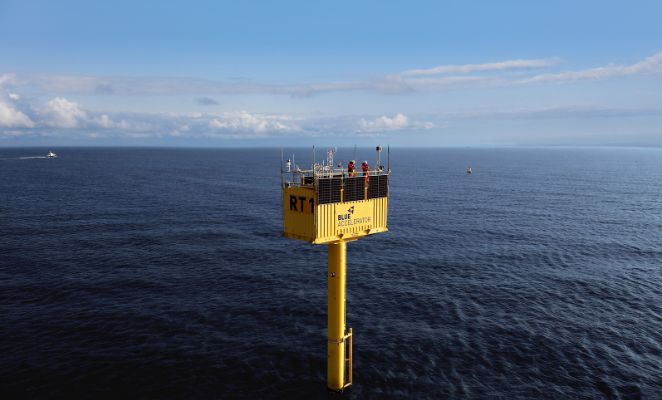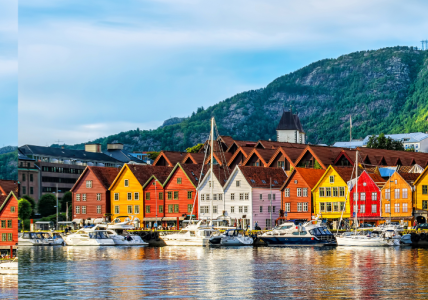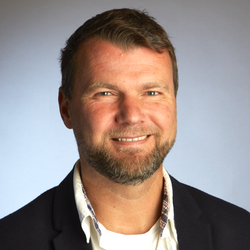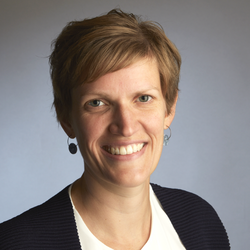
Let's turn the tide
With North Sea countries acting as world class leaders in green energy transition, our region is uniquely placed to pioneer the transformation that the planet needs.
As green solutions are evolving ever faster, energy and transport systems must keep pace with the development. We need the best, most robust solutions to reach a net zero carbon state rather sooner than later, at the lowest possible cost.
Priority 2 covers initiatives to expand the use of green energy, boost energy efficiencies, and develop smart energy systems, the circular economy, and green urban mobility.
Specific objectives
Please note: The examples of themes and actions listed below are only indicative. If in doubt, please get in touch with us to clarify the best match for your project idea.
The simplest way to lower the region's carbon footprint is to use less energy in the first place. We therefore encourage projects that drive the renovation wave forward. In addition, we support a range of other actions to reduce the atmospheric carbon load.
Energy is a complex issue and projects should demonstrate carbon reductions that can be achieved within current constraints. They should focus on regional strengths and promising areas for significant long-term impact.
Examples of themes in Specific Objective 2.1:
Low-carbon solutions ● Energy efficient and refurbished buildings ● Energy supply chains ● Industrial design and manufacturing ● Carbon Capture solutions ● Rural and urban business- and household energy
Examples of actions:
- Fostering the deployment of renovation of buildings with a clear added value to already existing initiatives.
- Supporting the continuous growth of nearly zero-energy buildings (NZEB).
- Stimulating measures for health and well-being (e.g., self-regulation equipment in new buildings).
- Increasing energy efficiency in ports.
- Eliminating emissions in logistics chains.
- Helping to develop energy supply chains on local and regional levels, e.g. 'waste heat' in urban areas, closed energy supply chains.
- Awareness raising of greening methods and results.
- Implementing pilots to identify energy resource savings through innovative industrial design and manufacturing processes.
- Reducing overall energy use by changing behaviour and increasing take-up of energy-saving technologies.
- Encouraging cross-disciplinary, systems-level approaches to secure higher energy efficiency in the urban environment.
The North Sea Region is an innovation leader in renewable energy technologies including wind, solar, hydrogen, biomass, and blue energy. The North Sea itself offers vast potential for offshore energy, set to be a cornerstone of the clean energy transition in the EU. And as more advanced and cost-efficient solutions emerge, we are looking to fund projects that tap into new opportunities - on land or at sea.
Examples of themes in Specific Objective 2.2:
Offshore wind energy ● Solar energy ● Wave and tidal energy ● Hydro energy ● Biomass ● Green hydrogen
Examples of actions:
- Supporting the uptake of renewable energy technologies through transnational exchange of knowledge and good practices.
- Increasing cost-efficiency of renewable energy systems by implementing smart maintenance concepts.
- Developing and piloting dual use concepts for offshore wind farms.
- Developing new demand side concepts to increase the share of renewable energy in the total energy demand of energy consumers.
- Exploring the potential for rural regions of novel renewable energy technologies, such as tidal energy.
- Supporting the bridge between the technologies of renewable energies of today and those of the future.
- Stimulating the increased use and production of fossil-free energy systems
- Adapting the renewable energy infrastructure to mitigate its environmental impact, in particular on biodiversity, as well as on human health and well-being.
- Mapping areas suitable for renewables development and developing methods for reducing conflict with other land uses.
Smart grids and energy storage options are needed to keep pace with green energy production and capture its full benefits. Renewable energy production is on the rise, and it is increasingly decentralised, posing challenges to the storage and distribution frameworks. This is why we support the evolution and uptake of smart energy systems that underpin growth in the renewable energy sector.
Examples of themes in Specific Objective 2.3:
Uptake of smart energy systems ● Smart grid ● Battery technology ● Awareness raising of long-term benefits of green energy production, storage, and transmission
Examples of actions:
- Demonstrating the application of smart grid technologies as a way of saving energy and integrating more renewable power in the energy mix
- Supporting the uptake of smart energy systems and technologies in the construction and building sectors
- Developing electrification of the energy system that is in line with the Commission's 'Clean energy for all Europeans package,' i.e. pilots and demonstrations are necessary to define scale, regulatory issues, technical issues, and economic feasibility
- Supporting the energy value chain to ensure that both costs and benefits are kept in the local and regional energy systems
- Implementing pilots and demonstrations on aspects of Power-to-X and other energy transformation technologies
- Supporting the opportunities for companies and individuals to supply to the grid at peak times and use electricity from the grid when needed
- Protecting digital energy systems and supply, including threats to cyber security
- Stimulating a “future proof” energy storage value chain
Reduce, reuse, repurpose, recycle. The principle of circularity is as simple and clever as it is hard to implement in the busy and complex reality of daily life. We are looking to support projects that foster circular designs and concepts throughout society, to save resources and energy.
Examples of themes in Specific Objective 2.4
Circularity in design of products and packaging ● Reparability, durability and reusability of products ● Circularity in production processes ● Circularity in value- and supply-chains ● Waste management and recycling ● Creating a market for secondary resources ●Circular business models
Examples of actions
- Providing support to pilots, demonstrations and test beds in order to scale-up the use of product and service innovation to support circularity
- Improving land and sea ecosystems by supporting circularity in agriculture and forestry
- Providing improved production methods for packaging that enhance circularity of the material used
- Fostering initiatives on circular procurement methods to encourage long-lasting change
- Encouraging a transition to circular production in rural areas to encourage new business opportunities and reduce the urban-rural divide
- Encouraging circularity of renewable energy infrastructures, e.g. through the dismantling and recycling of wind- and off-shore constructions
- Enhancing the development of new value-chains of circular economy, especially for rural regions
- Utilising open data access to encourage development and accessibility of spare parts
- Recycling of legacy of materials or extraction of hard to recycle substances
- Improving waste management practices to reduce the threat of plastic in the North Sea
- Developing efficient ways to achieve re-use of products or collection and recycling of materials
- Encouraging resource-efficient design, digitalisation or sustainable business models where producers keep ownership of products to encourage attention on durability
- Assisting the phasing out of current conventional technologies and implementing new technologies that fit into circular economy systems
Transport cannot be left out of the equation if Europe is to become the world's first climate-neutral continent. We therefore support the deployment and uptake of sustainable transport solutions across the North Sea region. On top of reducing CO2 emissions, this will improve liveability through better air quality and less traffic congestion.
Examples of themes in Specific Objective 2.5:
Green modes of urban transport and rural-urban linkages ● Greening of local and regional logistical chains ● Intelligent Transport Solutions ● Multi-modal connections ● Demand-driven passenger transport models
Examples of actions:
- Supporting the development of sustainable logistics for urban areas and interconnected territories by integrating local supply chains and reducing transport distances
- Supporting the development, implementation and monitoring of Sustainable Urban Mobility Plans and/or Sustainable Urban Logistics Plans and other measures to develop urban consolidation centres for greening city logistics
- Enhancing sustainable mobility services in urban areas and their surroundings by developing and testing innovative IT solutions
- Promoting the deployment of green last-mile solutions, e.g. use of cargo-bikes
- Developing “green-accessibility” through soft modes of transport like cycling, e-biking and walking
- Supporting the development of mobility hubs in urban and non-urban areas
- Enabling start-ups and SMEs working in zero-emission transport industries to take advantage of business opportunities by piloting and assessing new initiatives in sustainable mobility measures
- Supporting solutions for electric/alternative propulsion mobility at urban and regional levels by contributing to existing or pilot networks of charging/distribution infrastructures, and testing for infrastructure bottlenecks
- Encouraging social innovations in the mobility sector, such as shared mobility and co-creation by boosting capacities and supporting the application of already available concepts
- Improving/upscaling sustainable and locally produced batteries and vehicles and alternative/new fuels
- Improving sustainable mobility between urban and rural areas
- Promoting automation and autonomous transport on land and water by creating awareness of the advantages of these solutions
Need advice?
Feel free to consult one of our project advisors dedicated to this priority.
Please note: Marie Martin Kjærsgaard and Jesper Jönsson cover specific objectives 2.1-2.4, while Peter Racz and Jenny Thomsen cover specific objective 2.5.







